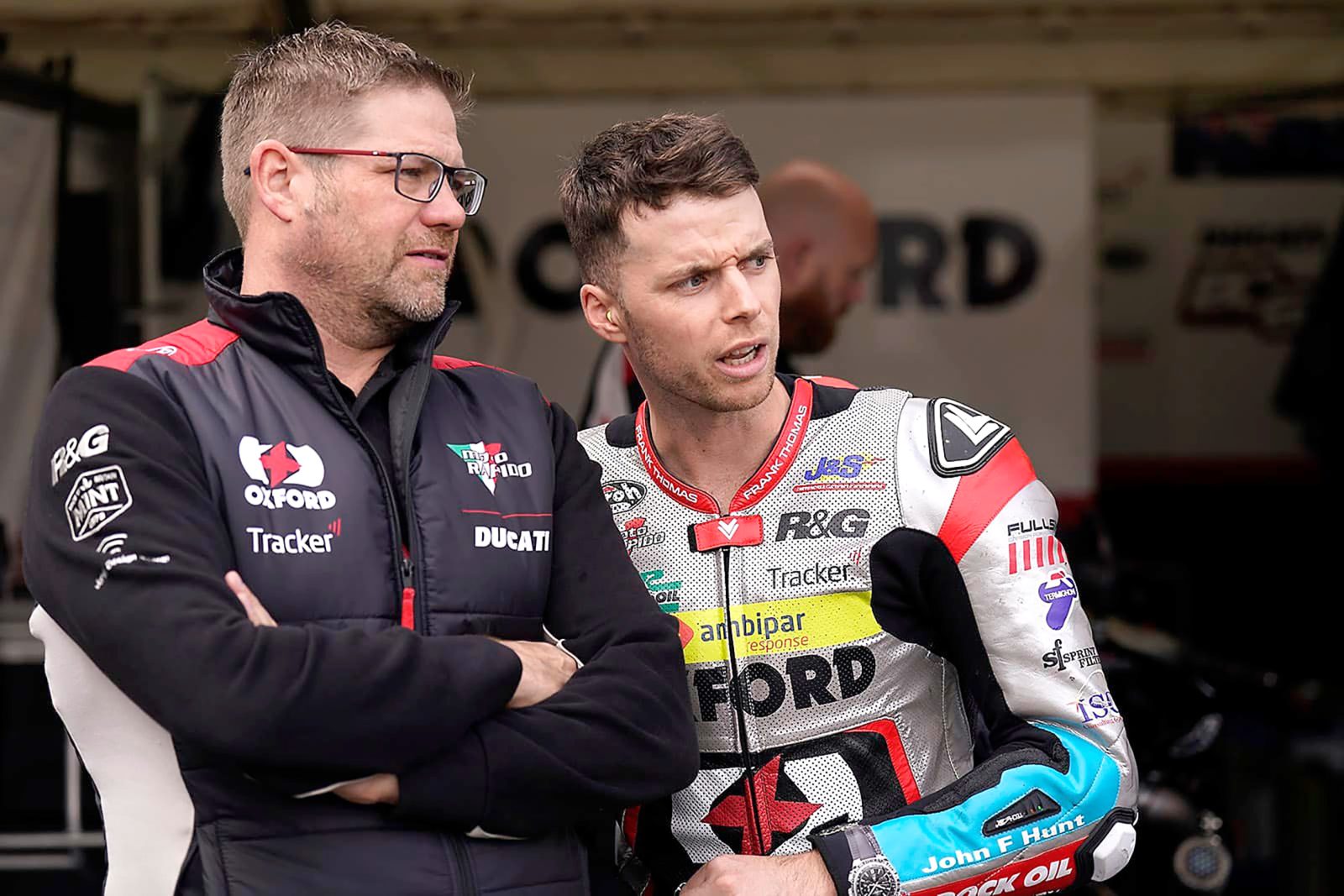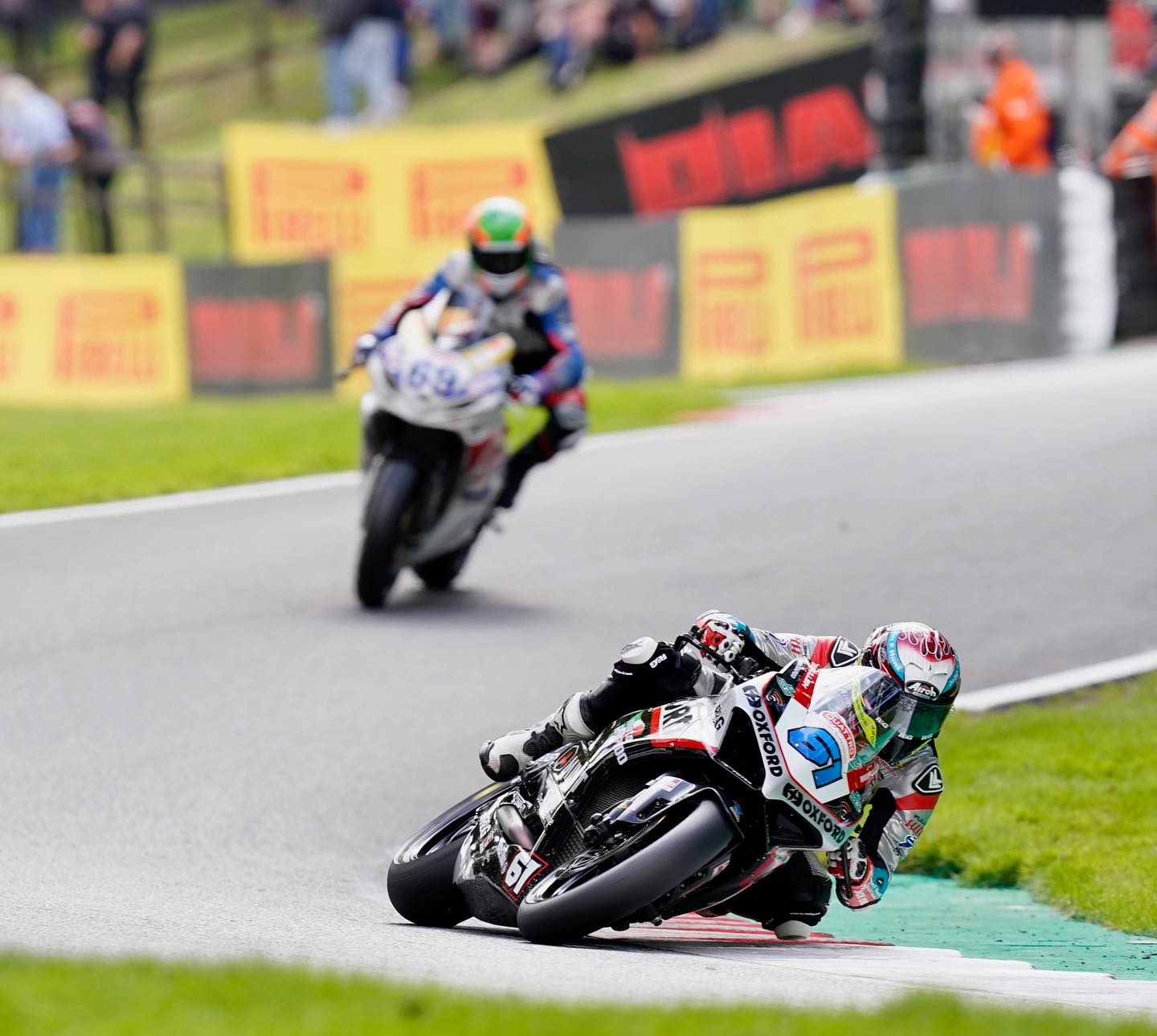Can you start by telling us about your role at British Ducati dealership and race tuning shop Moto Rapido?
I’ve got many hats really, I primarily run the shop but the race team takes over mid-season, especially when there are things we are working on with the Superbike. Geographically, in the UK, we have a huge number of Ducati dealers considering how big the place is, and we basically cover the south of England. All the Ducati’s that race in Supersport in the UK, we look after those. There are a load of club racers here as well that get that sort of support, it’s a busy place.
You must have a good relationship with Bologna?
Yeah, we’re pretty well connected with Ducati Corse, it’s easy for us with only an hour difference in the time zone or a two-hour flight. We spend quite a lot of time chatting to them, especially with the Supersport project. It’s quite handy having those guys on tap. We’ve got a Ducati Corse engine builder who’s been to the factory and is trained in building race engines.

How did the decision to run Ben in Supersport this year come about?
Basically, we weren’t really planning on running a Supersport bike at all. Last year was the end of the Tri Options Cup (a Ducati-only series for the V2). We’d been supporting satellite teams in that series since it started in 2012, when it was the 848 Cup. Ducati wanted us to continue helping the V2 teams as that bike was being introduced into Supersport, and the discussions evolved into the suggestion of ‘why don’t you guys run one.’
Historically, Supersport has been an expensive class to compete in because the bikes are tuned to death. This Next Generation of Supersport is a very different prospect. We knew we needed some help from the factory, plus a decent rider – someone that can run at the front and develop it. It’s no good just having an average Joe ride it. Ben was super keen to start his career over again after World Supersport.
BSB was the test bed for Next Generation Supersport rules. How do you guys achieve parity and how has the V2 slotted in to the grid?
The sales for 600s don’t really support racing projects – so the manufacturers worked out what models were actually viable. There was the 765 Triumph – a triple, a V-Twin Ducati, 636 Kawasaki, the GSX-R750…all sorts of bikes. There are some very clever balancing regulations going on. There are slightly different weight limits and the Ducati has to be a little bit heavier. In BSB it’s calculated on rider and bike combined weight. If you’ve got a light rider you need a heavy bike and vice versa.
However, the main way to achieve performance balancing is via the electronics. There is a control ECU that everybody has to run, and that ECU has a manufacturer file. Within that file there is a table that limits throttle position opening. The Supersport bike we race has slightly less power available than a regular road going V2 – so it’s not overwhelmingly faster than all the other bikes. The logic being that approximately 140hp is what all the bikes make, and that’s plenty for good Supersport racing. It’s not a horsepower limit as such, it’s the throttle positioning, and that is based on how fast the bike is actually travelling across the ground. That means the Ducati can’t go through a chicane, then have all its power and torque available to jump out and pass the other bikes. When the bike is going slowly, it doesn’t get that punch. That’s basically how the balancing works. There is quite a lot of technical control and checking, and it seems to be working.
It does come with its own problems – we have to make the bike work within those limitations. We’ve done a lot of work with Ben’s throttle mappings and engine braking. It takes a little bit of development and time.

So in theory, you should not only have even racing but also a cheaper bike?
This is the main benefit, it’s a real positive that is mostly overlooked. We will use fewer than half the racing engines on a V2 Ducati than a Yamaha will use. Race engines are quite expensive to build and refresh. In the whole championship, Ben will use two motors.
There are guys in the championship that will just change oil and filters and run the same engine all year, no issues. There are teams in the Supersport championship that are not full-time racers – what we call ‘lad and dad’ teams. If they have to refresh their engine every other weekend, that puts a strain on normal life. The V2 is basically running at standard road bike RPM, we’re not overstressing the engine and we have all the performance we need. That makes the thing super reliable.
What about the technical burden on the controlling bodies?
The electronic system is very sophisticated and secure. Because the throttles are restricted electronically, there is no point in us tuning the bike because we aren’t going to get any more out of it. That can be checked very simply through the control dash and ECU. A scrutineer can check it in about 30 seconds. They can also quickly press a few buttons on the handlebars and view what map we are running and what firmware. It’s much less time consuming to police than it would be to strip engines.
And I guess a flow-on effect is increased manufacturer support?
Yeah, the manufacturers have an interest in Supersport now. Ducati are quite interested, they have an official team in World Supersport, Moto America and we’re the official team in BSB. It’s beneficial to have that motivation for a factory connection, it makes a big difference – it means we now have better leverage for sponsorship and that translates to cheaper parts.

Tell us about working working with Ben.
The bike has evolved quite a bit even though there is very restrictive tuning available, chassis wise. We can’t change swingarm pivots, head angles or fork offset, that type of thing. We have the same procedures and staff on the Supersport bike as we do on the Superbike. The Superbike data guy, Ash, he works on Christian’s (Iddon) bike as well as Ben’s. I’m the crew chief for both and we use the same chassis software.
Ben had to get his head around not needing to have the thing sat on the rev limiter all the time. That was a bit of a challenge but we soon beat that out of him. He had to learn to ride the bike more like a Superbike. We don’t carry the corner speed of the Yamaha, but we can brake later and deeper and the stability is very good. That took a bit of adjustment and a few track sessions for Ben to get his head around it. We then tried to focus on the strengths of the bike, and then things evolved quickly. We went from being sixth or seventh to fourth or fifth, then on the podium and eventually winning races. We’ve now won the last four. Ben reacts really well if we tell him what he needs to do, if we show him the data, show him where he is losing time. That’s been very rewarding, actually.
Did you know BSB Supersport is now shown on Aussie TV?
I had a screenshot from an Aussie pub with a load of people sitting around watching BSB Supersport, it’s great! Thruxton was an Aussie lockout, O’Halloran on Superbike, Ben in Supersport and McConnell in Superstock. Aussies go well in the UK for some reason, particularly in the wet. I think it’s because they don’t know it’s slippery, we just put the wet tyres on and tell them to go ride.

Interview Matt O’Connell